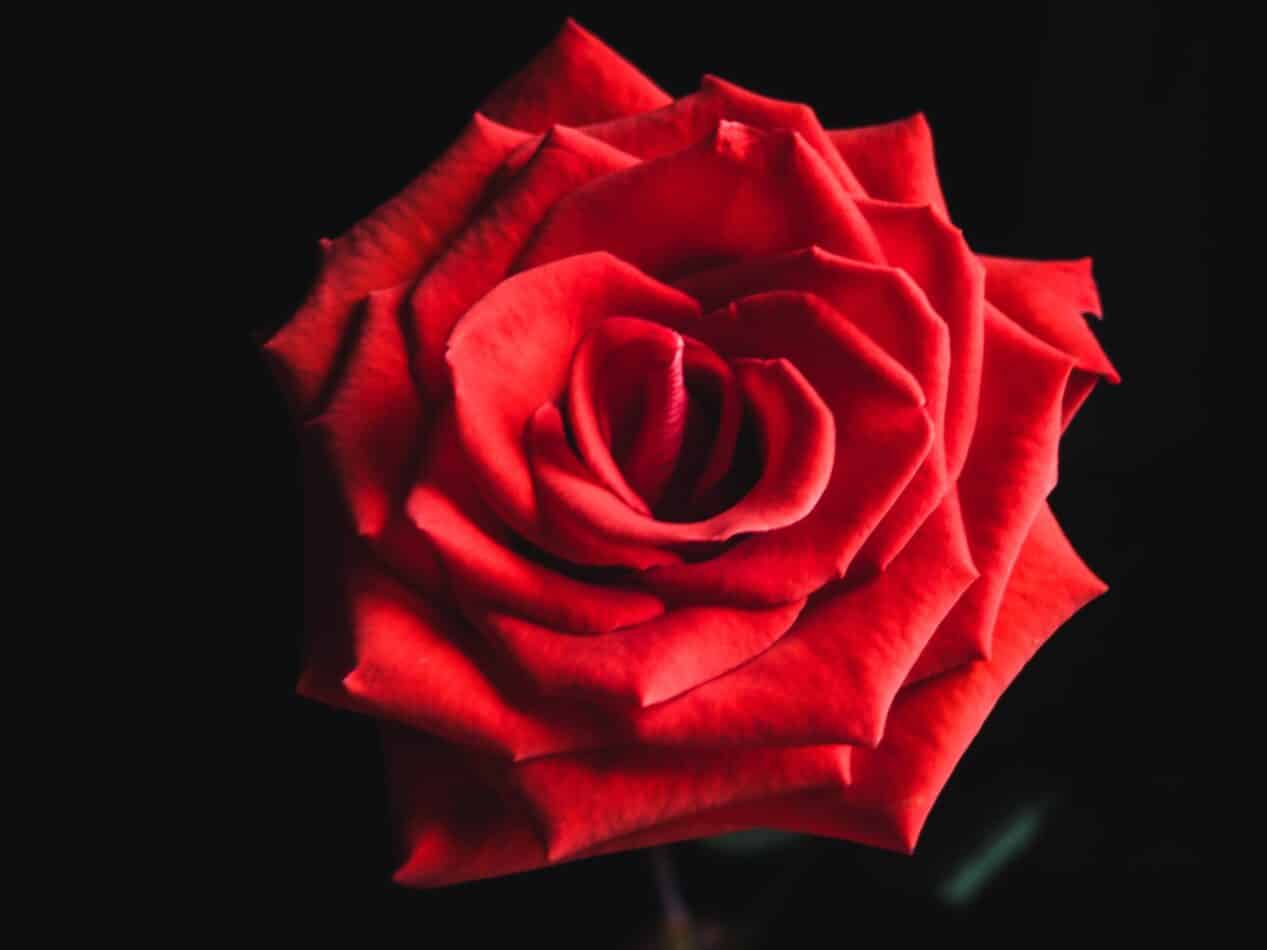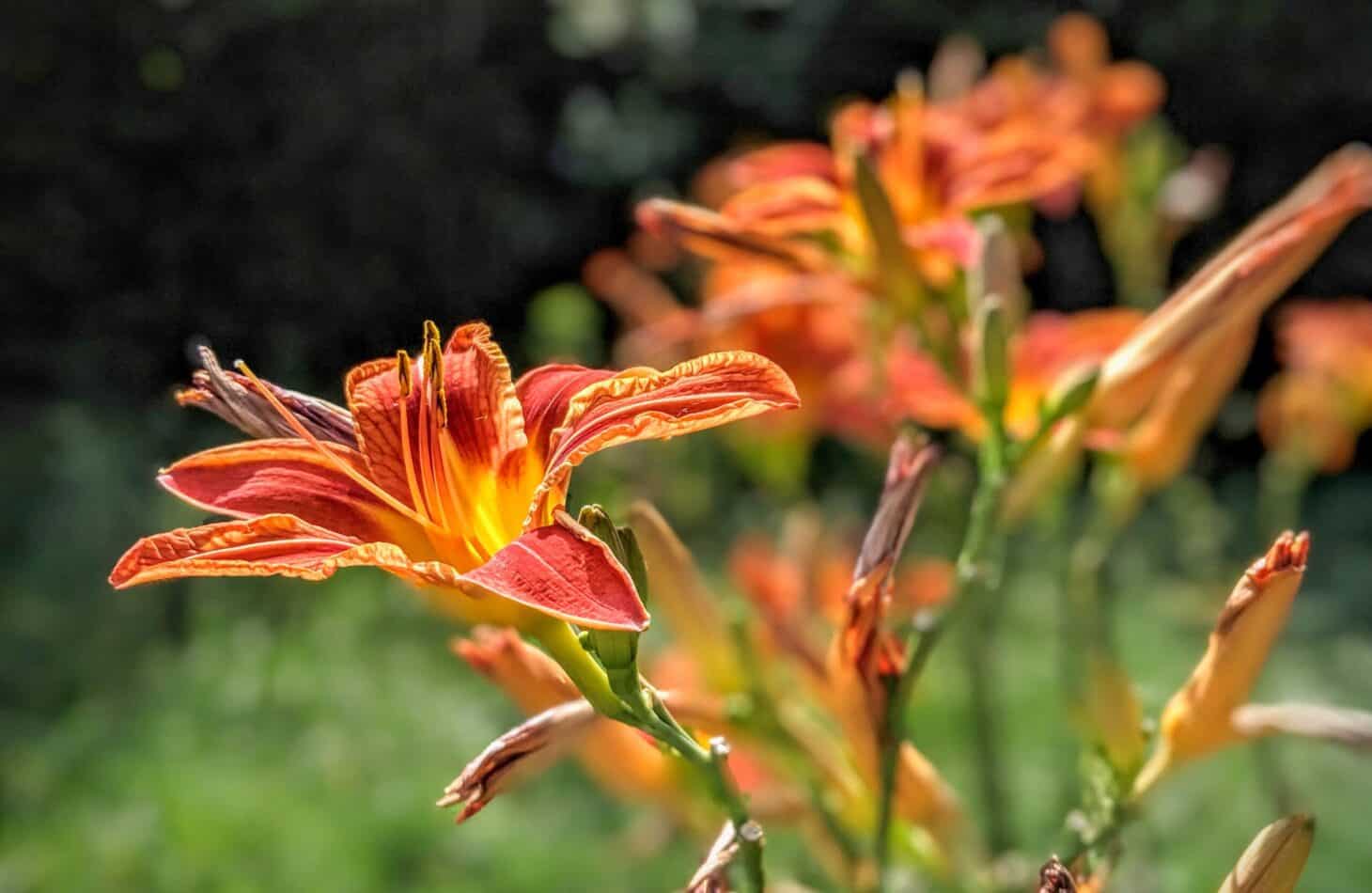Freesia is a genus in the Iridaceae family, and it is a herbaceous perennial flower. Thin, arching stems produce 5 to 10 trumpet-shaped flowers that come in red, pink, blue, yellow, and white coloring. They are prized for their fresh fragrance and are typically grown for cut flowers, but they have a place in all perennial borders thanks to their bright colors. They need full sun and well-drained soil.
The etymology of Fresia is derived from Dr. Friedrich Heinrich Theodor Freese who was a medical doctor and botanist from Germany; he named this genus after Friedrich H.T. Freese in 1866.
How to Plant
Freesias are easy to plant and maintain. For best results, plant Freesias in a sunny, well-draining spot in the garden. Before planting, dig up the soil, mix in some compost and give the soil a light rake. Once the soil is ready to go, dig a hole twice as wide as the Freesias’ root ball and set the bulb in the hole.
Freesias should be planted in late autumn or early spring. Once the bulbs are planted, give them a light water. When planting in pots outside, make sure to use well-draining soil mix and use a pot that is at least 6-8 inches deep. The Freesias need well-drained soil and full sunlight, but it is best to protect them from excessive heat.
Water the Freesias regularly, especially during the growing and flowering season. However, do not overwater as too much moisture can cause the bulbs to rot. During the winter, Freesias should be provided with some water. Mulch helps protect the Freesias from harsh weather.
Meaning and Symbolism
Freesias carry different meanings, depending on the color of the flower. Red Freesias symbolize love and passion, while pink Freesias represent innocence and joy. Yellow Freesias are associated with friendship, white Freesias symbolize innocence and purity, and blue Freesias represent wisdom and trust. Furthermore, Freesia is a symbol of innocence, harmony and thoughtfulness.
History, Mythology, and Religious Significance
In Ancient Greece, Freesias were believed to be associated with the God of Freedom, Dionysus. The Freesias were buried with warriors before they went into battle. In ancient Persia, Freesias were believed to bring good luck and were used by doctors to treat nervous disorders. Freesia became a symbol of Irish nationalism in the 16th century and continues to play an important role in many religious ceremonies to this day.
Flower Varieties and Their Defining Characteristics
Freesias come in a variety of colors and sizes; some of the most popular varieties include:
- Double Freesias (Freesia Spp.): Double Freesia is a perennial flower that produces beautiful white and pink blooms in the spring. They have a sweet scent and are drought-tolerant.
- White Freesia (Freesia Refracta): White Freesia is a perennial flower that blooms in the summer. The blooms have a strong fragrance and the leaves are narrow and lance-shaped.
- Red Freesia (Freesia Hybrid): Red Freesias are a hybrid variety of Freesias that produce beautiful pink and red blooms. The blooms are extremely fragrant and the plants are easy to grow.
- Crimson Freesia (Freesia Spp.): Crimson Freesia is a perennial flower that produces bright red blooms in the summer. The blooms have a sweet fragrance and the plant is drought-tolerant.
- Yellow Freesia (Freesia Leichtlini): Yellow Freesia is a perennial flower that produces fragrant yellow blooms in late summer and fall. The blooms are long lasting and the foliage is lance-shaped.
How to Pot and Repot
Freesias should be repotted every spring before they start to bloom. The best time to repot is when the Freesia is still in the dormant stage. If you repot too late, you will disturb the bulb and delay the blooming. When repotting, use a potting soil that is well-draining and fertile. Make sure to use a pot that is one size bigger than the current pot.
It is best to pot Freesias in pots with a few side holes for good drainage. If you are planting Freesias in the garden, make sure to plant it in an area that gets lots of sunlight and is well-draining. Place the Freesia bulbs about 2-4 inches deep and space the bulbs 6-8 inches apart. Make sure to keep the soil moist, but avoid over-watering.
How to Prune
Freesias should be pruned in late winter or early spring. Before pruning, remove any presence of pests or diseases. . When pruning, make sure to cut off the old stems from the ground and even out the foliage. Remove any dead blooms or foliage that is blocking the stems from growing. Make sure to use clean gardening tools to prevent any spread of disease.
Freesias are relatively self-sufficient and should not need a lot of other maintenance, such as fertilizing or pruning. However, if the soil and drainage is good, you may want to add a light feed of fertilizer after pruning.
How to Propagate
Freesias can be propagated by division or seed. When propagating by division, dig up the parent plant, separate the clumps, and replant them in the prepared soil. Make sure the new location is in a slightly shaded location and is well-draining.
When propagating by seed, start the seeds indoors in late winter and move the young plants outdoors in spring. Sow the seeds in seed-starting mix and keep them in a warm location. Make sure to provide the young plants with light, moisture and good drainage.
Common Pests and Diseases
Freesias can be affected by a number of pests, including aphids, slugs, and spider mites. The best way to prevent pests from attacking your Freesias is to make sure your garden is free of weeds and that the soil has good drainage. You can also use neem oil or insecticidal soap to get rid of insects and snails.
Freesias can also be affected by fungal diseases like mildew, rust and powdery mildew. To prevent fungal diseases, make sure to provide the Freesias with good air circulation, avoid overhead watering and make sure to use a well-draining soil. If your Freesias are affected by a fungal disease, you can use a fungicide to get rid of it.
Three Frequently Asked Questions About Fresia
- What’s the best time to plant Freesias?The best time to plant Freesias is in autumn or early spring.
- How deep should be the hole when planting Freesias?You should dig a hole twice as wide as the root ball of the Freesias and make sure it’s at least 6-8 inches deep when planting in pots.
- How to care for Freesias?Freesias need well-drained soil, full sunlight and regular watering. Avoid overwatering and add mulch to protect the plant from harsh weather.
Table Fact Sheet, With Data
| Freesias and Fresia | Family | Plant Type | Mature Size | Sun Exposure | Soil Type | Soil pH | Bloom Time | Flower Color | Hardiness Zones | Native Area |
|---|---|---|---|---|---|---|---|---|---|---|
| Freesias, Fresia | Iridaceae | Perennials | 6-12 inches tall, 4-6 inches wide | Full sun | Well-drained | 6.0-7.0 | Spring-fall | Red, pink, blue, yellow, and white | 2-11 | South Africa |
What we love from Amazon this week
Buy these wonderful flowers directly from Amazon:















